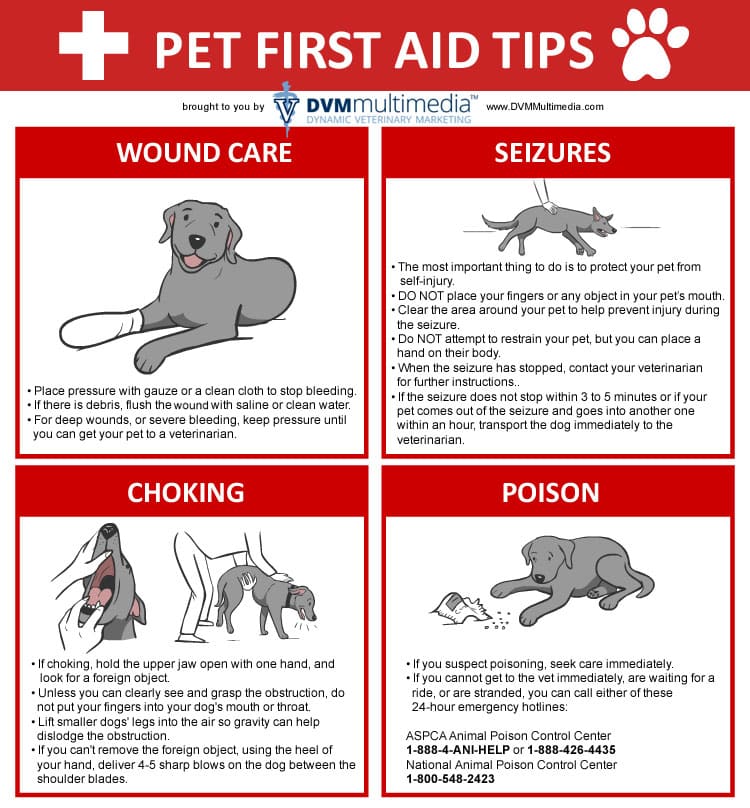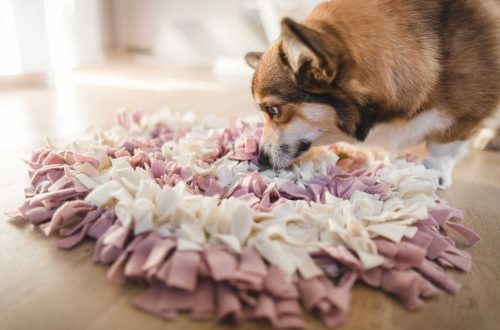
First aid for bleeding in dogs
Contents
The circulatory system of dogs
To understand how to properly help a dog with bleeding, it is necessary to understand how the circulatory system of dogs is organized. The circulatory system is the vessels and the heart. The vessels that carry blood away from the heart are arteries. Red blood flows through them, enriched with nutrients and oxygen. The heart gives this blood an acceleration with impulses, so it runs fast. As it approaches individual cells, the vessels become thinner, and already in the organs themselves, for example, in the skin, they turn into capillaries. There, the blood changes to venous and then enters the veins – vessels that carry blood saturated with carbon dioxide and decay products to the heart. This way, the blood moves more slowly, it is darker in color. This is important to know in order to determine whether the dog is bleeding: arterial, venous or capillary.
With venous bleeding, blood flows in a trickle. With arterial – beats with a fountain.
Capillary bleeding is formed when superficial vessels are damaged. The blood may be red or cherry in color and oozes out gradually.
Dangers of bleeding in dogs
Venous bleeding is fraught with slow blood loss. If you constantly flush the wound with water, you will not stop it. Arterial bleeding can lead to rapid blood loss. This blood is difficult to clot. Capillary bleeding is dangerous as blood loss in case of a large wound surface (for example, a wound on the paw pad is more than 2 cmXNUMX).
First aid for a dog with arterial bleeding
1. Lay the dog down, take a tourniquet (a bandage, rope, rubber tube, collar or leash will do), drag the limb – above the wound.2. If using a rope, tie the ends, thread a stick through and twist clockwise until the rope pulls the paw.3. If you manage to stop the bleeding, leave the tourniquet tightened and immediately go to the veterinarian.4. The wound is processed only along the edges, if you have brilliant green or iodine at hand. It is strictly forbidden to pour these drugs into the wound – they will burn the tissues.5. Apply a bandage.6. You can apply cold to the wound, through a bandage.
Dirt that can get into the wound is not as bad as bleeding, so do not wash off the clotted blood. If the veterinarian deems it necessary, he will do it himself.
7. If it takes more than 2 hours to get to the veterinarian, loosen the tourniquet every 1,5 hours. If the blood began to gush again – tighten it. If you leave the tourniquet for more than 2 hours, decay products will accumulate below, and this is fraught with tissue death.
First aid for a dog with venous bleeding
- If dark blood flows slowly from the wound (longer than 2 minutes), a pressure bandage should be applied. Roll up a roller (you can use cotton wool and a bandage) and put it on the wound. Bandage tightly. Very tight!
- Loosen the bandage after 1,5 hours. If blood is still flowing, tighten again.
- If the wound is large or you doubt you can stop the bleeding, call a doctor or take your dog to a veterinary clinic.
First aid for a dog with capillary bleeding
This bleeding is the easiest to stop.
- Place a hemostatic sponge or dry gelatin crystals on the wound.
- Apply a tight bandage, put ice under it (wrapping it with a towel).
- When the bleeding stops, rinse the wound (if it is dirty) with water, grease the edges with brilliant green. If you have iodine, proceed with extreme caution!
- If, after washing, blood flows again, repeat steps 1-2 again.
Dog First Aid Kit
If you are going on a long walk far from home, do not forget to bring with you:
- Wide sterile bandage.
- Wide strong rope.
- Gelatin sachet or hemostatic sponge.





